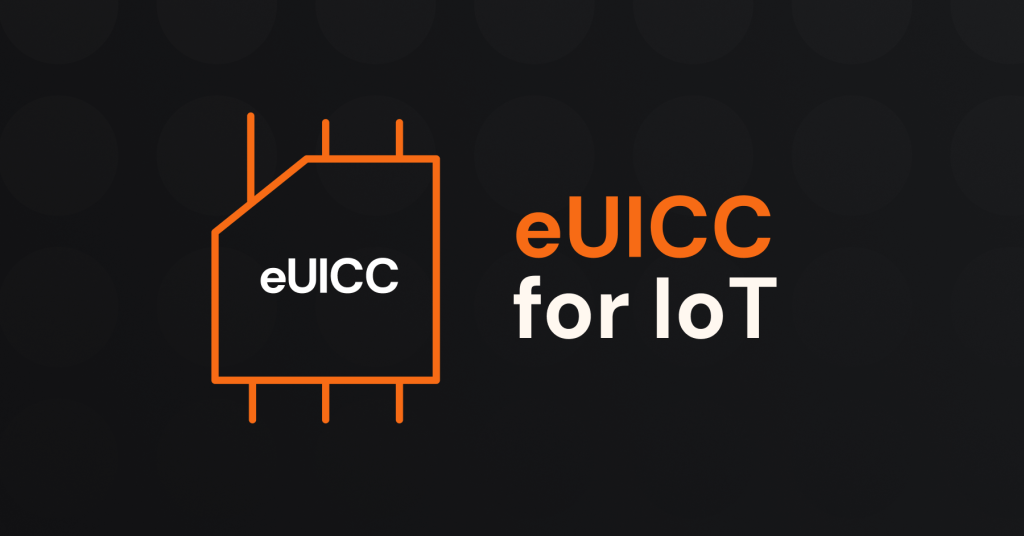What is an ICCID number?
An ICCID (Integrated Circuit Card Identification) number is a unique identifier for circuit cards, such as SIM cards, credit cards, and national identification cards.
In this article, we’re interested in telecommunications. More precisely, SIM cards for IoT connectivity.
If you’re looking for where to find the ICCID number, you can find it stored within the SIM card’s memory, and you can typically find the ICCID printed on the card itself.
ICCID numbers are helpful for IoT solutions as they help devices identify themselves when connecting to networks and are used when retrieving or updating information on SIMs over the air.
In this article, we’ll look at:
The structure of an ICCID number
The International Telecommunication Union (ITU) made the graphic below that shows the structure of the ICCID:

Here’s an example ICCID number for an Onomondo SIM:
ICCID = 89 + 45 + 73 + 0000271204 + 3
The number above is made up of from a combination of the following identifiers:
ICCID = MII + CC + IIN + IAIN + C
Here’s an explanation for each ICCID identifier:

MII (Major Industry Identifier) + CC + IIN + IAIN + C
- The first two digits identify the industry application of the circuit card. So you’ll always see 89 as the first SIM card ICCID number, which signifies telecommunication purposes.

MII + CC (Country Code) + IIN + IAIN + C
- We operate out of Denmark, so the country code is 45. For US-based MNOs and MVNOs, their country code is 1, so the ICCID becomes 19 digits (including the checksum). If we were based in Iceland, our 354 country code would make the ICCID 21 digits.

MII + CC + IIN (Issuer Identifier Number) + IAIN + C
- Onomondo’s operator code is 73, which is used as our Issuer Identifier. The Issuer Identifier can be more than two digits. Sometimes it is referred to as the same as the Mobile Network Code (MNC), but the operator code and the MNC are not necessarily the same value.

MII + CC + IIN + IAIN (Individual Account Identification Number) + C
- The other numbers in the ICCID, not counting the checksum, are the unique identifier for the SIM. The IAIN differentiates individual IoT SIM cards from the rest, meaning you can activate and remotely find your SIM globally.

MII + CC + IIN + IAIN + C (Checksum)
- The checksum is used to validate the integrity of the ICCID number after transmission. It’s calculated from the other digits in the ICCID using the Luhn algorithm.
How to find a SIM’s ICCID number
You’ll need to use the ICCID to manage specific SIM cards. You’ll find it printed on the card or packaging, but that will not be helpful when operating devices remotely.
Here’s how to find an ICCID using a range of methods.
Via AT commands
You can access information on devices using AT Commands (ATtention commands) which are instructions used to control a modem. AT is the abbreviation of ATtention.
If you’d like to read about testing connectivity and establishing a data connection using AT Commands, you can pop over to this help article to learn more: How do I test connectivity with AT commands?
There are some universal commands which should work across all modem types. They are covered in the ETSI Technical Specification: AT command set for User Equipment (UE).
Unfortunately, there’s no universal AT command for ICCID, it is a proprietary implementation, meaning it will vary from manufacturer to manufacturer.
Here are some specific AT Command examples for fetching ICCID from manufacturers:
- U-blox =
AT+CCID
Source: U-blox AT Command manual.
- SIMCom =
AT+CCID
Source: SIM800 Series_AT Command Manual_V1.09.
- Nordic Semiconductor =
AT%XICCID
Source: nRF91 AT Commands.
- Telit =
AT#CCID
Source: Telit AT Commands Reference Guide.
- Quectel =
AT+QCCID
Source: Quectel EC25 Command Manual.
- Cinterion =
AT+CCID
Source: Cinterion ELS61-E2 AT Command Set.
Beware that these AT Commands may also differ from series to series, so always check the manual.
Via the Onomondo Platform and API
When using the Onomondo platform, you’ll see the ICCID on the SIM view in the SIM information panel.

You can quickly get all SIM IDs connected to your account via the Onomondo API, as well.
The response will include the ICCIDs.

When you know the ICCID of a SIM you’d like information on, you can use the ICCID to make SIM calls over the API.

What’s the difference between ICCID, IMSI, and IMEI?
It’s pretty easy to confuse ICCID with the IMSI or IMEI numbers.
In short:
- ICCID is the SIM card identifier
- IMEI is the device identifier
- IMSI identifies the SIM card user
We recommend using ICCID to identify SIMs, as it’s more static.
IMSI
IMSI (Multiple International Mobile Subscriber Identity) is a unique code used by MNOs and MVNOs to identify and authenticate subscribers when they attempt to connect to the network.
It has the following format:

- MCC = Mobile Country Code
- MNC = Mobile Network Code
- MSIN = The unique number that identifies the subscriber
In Onomondo, you can see which networks your devices attach to using MCC and MNC.
You can see this information really easily using one of our insights tool called Network Logs.
IMEI
Every mobile phone and modem has a unique 15-digit IMEI (International Mobile Equipment Identity).
The IMEI number is a unique identifier for your phone or modem that you can use to check information about the device.
Test connectivity with AT commands
Now that you know how to find the ICCID of your IoT SIM card, why not go a step further and learn how to test the connectivity of your devices using AT commands.
Connectivity is critical for IoT success and you’ll want to be sure that your devices send the valuable data they collect or perform critical actions when out in the field.
By using the sequence of AT commands in this blog, you can establish a data connection and test modem connectivity for your IoT devices: How to test connectivity with AT commands.
Happy testing!






